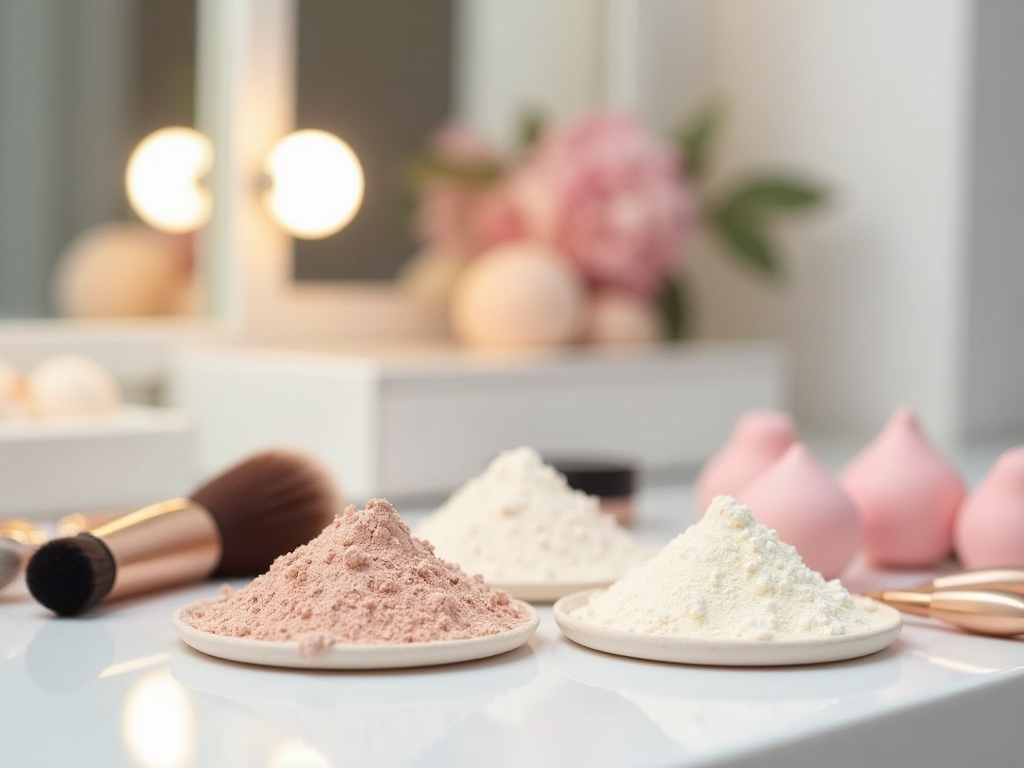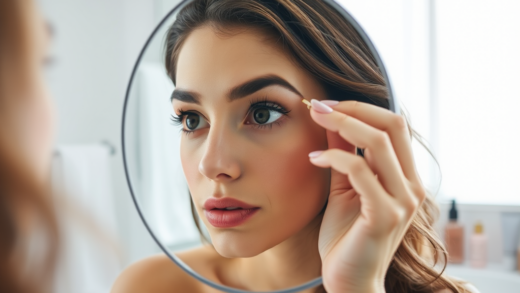When it comes to achieving a flawless makeup look, understanding the difference between setting powder and finishing powder can make all the difference. Setting and finishing powders are both used to enhance the longevity and appearance of your makeup, but knowing when and how to use each is key. This guide will explore the distinct roles, applications, and benefits of both powders, ensuring you achieve professional-level results every time.
Understanding Setting Powder

Setting powder is primarily designed to lock your foundation and concealer in place, preventing them from creasing or fading. It comes in both loose and pressed forms, offering versatility depending on one’s personal preference. This powder is typically applied right after foundation to absorb excess oils and provide a matte finish, which can help to control shine throughout the day. Using setting powder is simple yet transformative. Here are the steps for optimal application:
- After applying foundation and concealer, dip a fluffy brush or a beauty sponge into the setting powder.
- Lightly tap the brush against the container’s rim to remove any excess product.
- Gently press the powder onto areas prone to oiliness or that need extra staying power, such as the T-zone and under the eyes.
- Allow the powder to sit, or “bake,” for a few minutes if desired, before lightly brushing off any excess with a clean brush.
The main advantage of setting powder is its ability to extend the wear of your makeup by keeping shine at bay. It’s an essential product for those with oily or combination skin types who struggle with midday shine or makeup breakdown.
While setting powder is crucial for makeup longevity, finishing powder is all about perfecting texture and appearance. Typically lighter than setting powders, finishing powders are used to blur fine lines and pores, giving skin a smooth and soft focus effect. Finishing powders are applied once all base makeup is complete. Here’s how to use them effectively:
- Once you’ve applied your foundation, concealer, and setting powder, swirl a soft, large brush into the finishing powder.
- Tap off the excess product and gently sweep the brush over your face in a light, circular motion.
- Focus on areas where you want to minimize the appearance of pores or fine lines.
- Avoid layering too much finishing powder, as it is meant to be a sheer veil rather than a heavy layer.
Finishing powder is ideal for special occasions or photographs, as it creates a flawless, retouched finish. However, because it functions more as a cosmetic filter than a base setting tool, it might not be necessary for everyday use.
Choosing the Right Powder for Your Skin Type
Selecting the appropriate powder for your skin type is crucial to achieving perfect coverage. Generally, setting powders are a safer bet for oily skin types due to their mattifying properties. On the other hand, those with dry or combination skin might benefit from the lightweight and less drying nature of finishing powders. For those with sensitive skin, it’s important to opt for powders labeled as hypoallergenic. These powders minimize the risk of irritation, providing comfort throughout the day. When selecting a powder, keep an eye out for ingredients like talc, silica, or mica for an indication of the powder’s texture and coverage level. Among the broad spectrum of makeup products available today, these powders come in a variety of shades and finishes to match different skin tones and desired effects. Don’t hesitate to test out a few options to see which pairs best with your skin type and makeup preferences.
Common Mistakes to Avoid
Even the most seasoned beauty enthusiasts can make mistakes when using setting and finishing powders. One common error is applying too much product, which can result in a cakey appearance. This occurs when powder accumulates in fine lines or clings to dry patches of skin. Another mistake is using the wrong type of powder for your desired outcome. Remember, setting powders are for longevity and oil control, while finishing powders are for blurring and perfecting. Mixing up their uses can lead to an unsatisfactory finish. Avoid using a powder that does not match your skin tone; this can leave a noticeable cast in photos, often referred to as “flashback.” Always test powders in natural light to ensure a seamless blend into your natural complexion.
Conclusion
In your quest for flawless makeup coverage, setting and finishing powders each play distinct yet complementary roles. By understanding their unique purposes and proper application techniques, you can vastly enhance both the appearance and longevity of your makeup. Whether you’re aiming for an everyday natural look or preparing for a photo-ready finish, the knowledge of these two powders empowers you to perfect your makeup artistry skills effortlessly.
Frequently Asked Questions
1. Can I use both setting and finishing powder together?
Yes, using both powders together can enhance your makeup look by controlling oil and perfecting texture. Apply the setting powder first to set your makeup, followed by finishing powder to smooth your skin’s appearance.
2. Does setting powder affect flash photography?
Some setting powders can cause flashback in photos due to high silica content. Look for flash-friendly powders that are specifically formulated to photograph well to avoid this issue.
3. Can I reapply finishing powder throughout the day?
Yes, you can reapply finishing powder for touch-ups. However, be cautious not to over-apply, as it can build up and create a cakey appearance.
4. Are tinted powders better than translucent powders?
Tinted powders can add a touch of color, helping to balance out skin tone, while translucent powders offer a sheer finish without altering the foundation color. The choice depends on your need for coverage.
5. What tools should I use to apply these powders?
A large fluffy brush is best for a light, even application of finishing powders, while a beauty sponge or dense brush is great for pressing setting powder onto the skin, especially for baking techniques.


